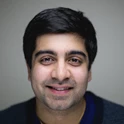The review process for this How-to Note has ended. The paper has been downloaded 36 times and we received 5 comments.
We are grateful to the many reviewers for their valuable comments. The author will carefully review and consider all comments when finalizing the note. The final version of the How-To Note will be published on the Open Development Technology Alliance website and announced in the World Bank blog forum.
Meanwhile, we invite you to review and comment on the new How-To Note "Using Information and Communication Technology (ICT) to Improve Transparency in Bank-Financed Projects", available here.
The Open Development Technology Alliance (ODTA), in collaboration with the World Bank's OPCS' Governance and Anticorruption Team (GAC) and the Social Development Network (SDV), is holding a consultation period to invite feedback on four short How-To reports. These draft papers explore the role information and communication technologies (ICTs) can play to enhance governance, strengthen social accountability mechanism and ultimately improve development outcomes.
You are invited to download and review the how-to note, "Getting on the Map- A Community’s Path to Better Services," and submit your feedback in the comments section below.
Getting on the Map - A Community's Path to Better Services
About the note: Maps have the ability to tell a story that becomes very compelling and hard to argue with,” as noted by Aleem Walji, Innovation Practice Manager at the World Bank. This note sheds light on "interactive community maps"-- an innovative development tool for marginalized communities that have appeared as blank spots on traditional maps. The idea of these maps is to harness the collective wisdom and knowledge of local communities to become drivers of development and improve the provision of public services. As part of the mapping process, local residents use basic GPS devices to map roads, pathways, and points of interest in their communities, and generate publicly available and multipurpose maps. On top of geospatial data, these maps also contain local news, reports, and stories shared by community members. Relying on best practice examples, the note walks through the design and implementation of the mapping process.
To learn more about this How-To series, click here.


Join the Conversation